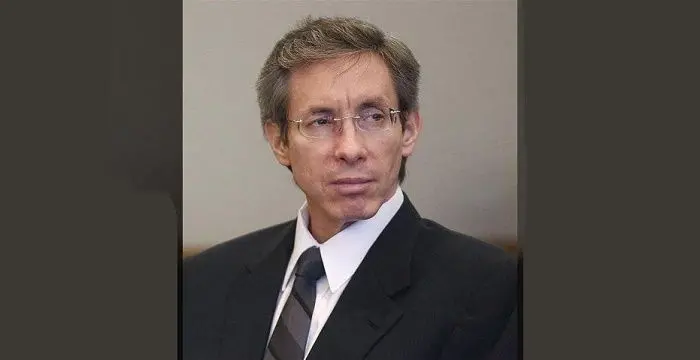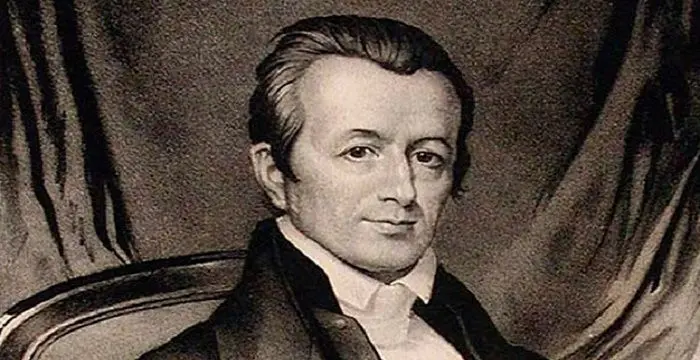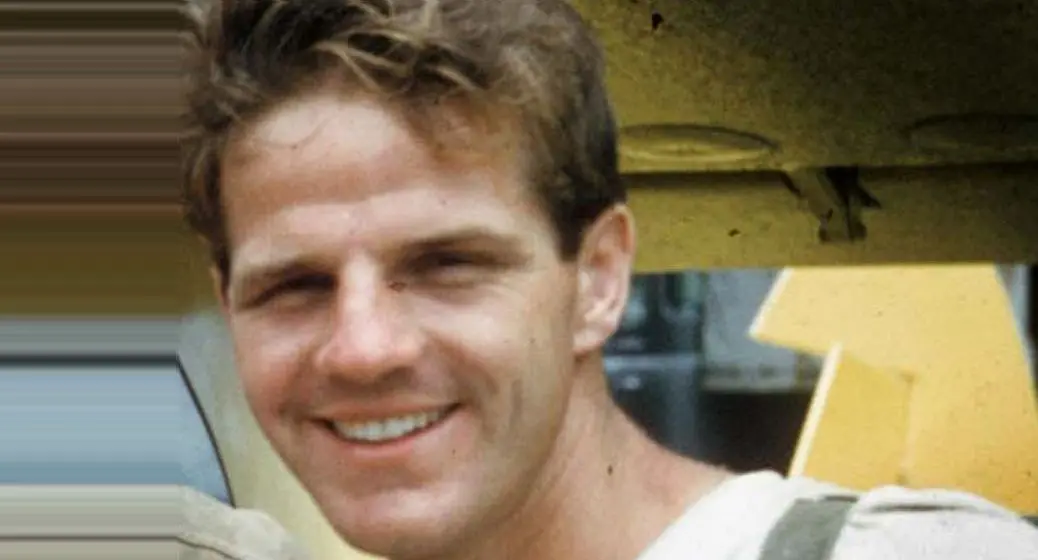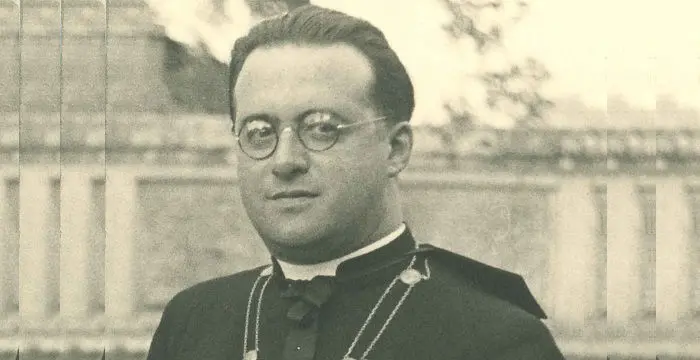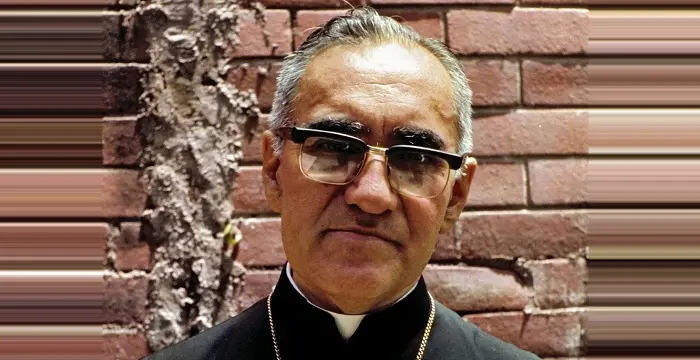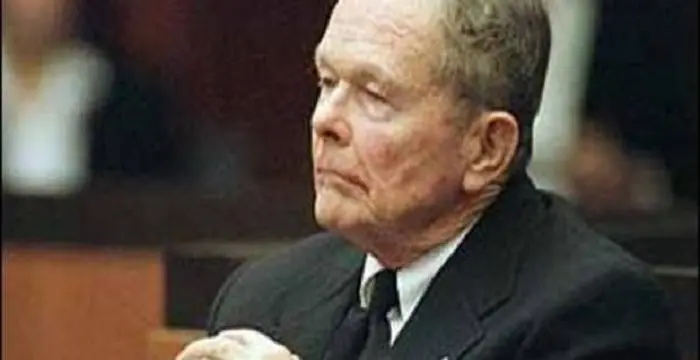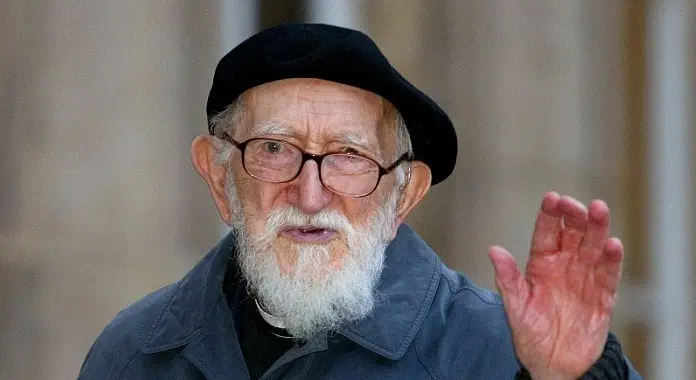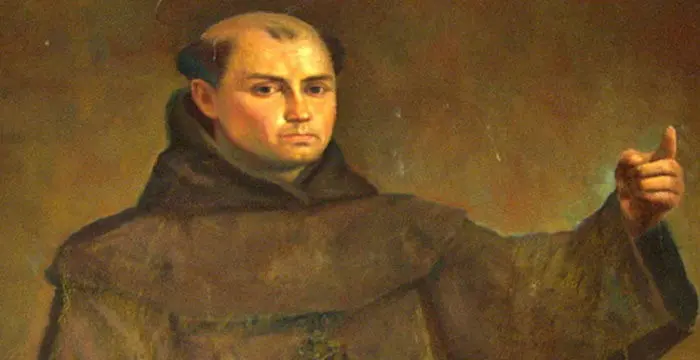
Junípero Serra - Franciscan Priest, Timeline and Childhood
Junípero Serra's Personal Details
Junípero Serra was a Franciscan priest, who was canonized in 2015
| Information | Detail |
|---|---|
| Birthday | November 24, 1713 |
| Died on | August 28, 1784 |
| Nationality | Spanish |
| Famous | Miscellaneous, Priests, Preachers, Franciscan Priest |
| Known as | Junipero Serra |
| Birth Place | Petra, Majorca |
| Religion | Catholicism |
| Gender | Male |
| Sun Sign | Sagittarius |
| Born in | Petra, Majorca |
| Famous as | Franciscan Priest |
| Died at Age | 70 |
Junípero Serra's photo
Who is Junípero Serra?
Junípero Serra was a Franciscan priest, who was canonized in 2015 for his dedication and service to his religion. Born in a farming family in the island of Majorca, he later came to be known as the founding father of California. Today he is revered as the Patron Saint of the state and also of the Hispanic Americans. He was a brilliant student and could have led a comfortable life by teaching at the Franciscan colleges. But, he chose to go on a mission to Mexico, then known as New Spain and preach among the Indians. Along with converting a large number of Indians to Christianity he also made sure they had a better life. He taught them agriculture and other vocations and thus improved the standard of living. Later, he went to California and set up a string of missions there. There too he converted large number of Indians and improved their living conditions. However, he maintained strict discipline and offenders were physically punished. Moreover, he did not allow the converted Indians to mix with non-converts lest they went back to their old ways. Later this created many controversies and indigenous Indians blame him for torture of their ancestors and destruction of their culture.
// Famous Miscellaneous
Jason Simpson
Jason Simpson is the son of former NFL running back, broadcaster and actor O. J. Simpson. Check out this biography to know about his childhood, family, life, and little known facts about him.
Melissa Brim
Melissa Brim is the ex-girlfriend of former professional boxer Floyd Mayweather Jr. Check out this biography to know about her birthday, childhood, family life, achievements and fun facts about her.
Joyce Meyer
Joyce Meyer is a Christian author and speaker. This biography provides detailed information about her childhood, life, achievements, works & timeline
Childhood & Early Life
Junípero Serra was born on November 24, 1713 in Petra, a small village in the Mediterranean island of Majorca, in Spain. According to the church records, he was baptized as Miquel Joseph Serra on the same day of his birth.
His parents, Antonio Nadal Serra and Margarita Rosa Ferrer, were small farmers. Apart from Miquel, they had two more elder children, who died in infancy. There is also the record of another child named Juana Maria. Their native tongue was Catalan. Later Miquel picked up Castilian Spanish; it became his second language.
By the age of seven, Miquel began to help his parents in their fields, where they grew wheat and beats. He also tended the cattle. However, his interest in religion was evident from an early age. He often visited the local Franciscan friary.
Later, he began to attend the school at the friary, where he was taught reading, writing, mathematics and Latin. There he also learnt to sing liturgical song and was especially good in Gregorian chants. As he had good voice, he was often asked to join the choirs.
At the age of fifteen, he went to Palma de Majorca, the capital city of the island. There he was enrolled at a school run by the Franciscan order. Finally on November 14, 1730, Serra became a novice under the Alcantarine branch of the Friars Minor.
As Novice
At the Friars Minor, Miquel was given the religious name of Junipero and put under a rigorous training program. Besides, he was required to make a vow of celibacy and also of scorning property and comfort. Letters and visits by parents were not encouraged.
At the academy, Junipero’s days were spent in prayers, meditation, spiritual reading and choir singing. Besides, they also received instruction on various subjects and had to undertake different physical core. He spent his spare time reading about Franciscan friars and their travel around the world.
As a Friar in Majorca
The training lasted for seven long years and finally, Junipero was ordained as Catholic priest sometime in 1738. In 1740, he received his ecclesiastical license to teach and started teaching philosophy at the Convento de San Francisco. In 1742, he received doctorate in theology from the Lullian College
From 1743, he began to teach at the Lullian College and occupied the Duns Scotus Chair of Philosophy until 1749. However, he did not totally abandon his parents and often visited them. Before he finally set sail for the New World, he wrote a letter to his college requesting them to console his parents as he was their only son.
In the New World
In 1749, Serra left for the New World along with a team of friars and landed at Vercruz on the Gulf of Mexico on December 7, 1749. From there, he and another fellow missionary set out for Mexico City, located at a distance of 250 miles, on foot. The rest of the team went by horses.
Although they too were offered horses Junípero Serra preferred to walk because Saint Francis of Assisi had forbidden the use of horses unless one is infirm. They did not have any money either and relied only on God. The trek was tough and long.
He reached Mexican City on January 1, 1750. By that time his legs were swollen and bleeding. The affliction stayed with him for the rest of his life and caused problems off and on.
At Mexican City, he joined his fellow friars at College of San Fernando de Mexico. There he voluntarily spent a year as novice and used this time to learn about the native Indians and gathered experience in mission administration.
At Sierra Gorda
In 1751, Junípero Serra was sent to Sierra Gorda mission at Jalpan as the Mission Superior. His student, Francisco Palóu, accompanied him as his assistant. Here they found the mission in disarray.
The majority of the inhabitants of that area were Pame Indians. Although many of them had converted to Christianity, they hardly attended the church. Serra first set out to learn their language. By and by, he began to involve the parishioners in different church activities and at the same time tried to improve their economic condition.
He had livestock and agricultural tools brought from Mexican City. While the men began to work in the fields under his supervision, he taught the women how to spin. The farm produces were distributed among the Indians according to their needs. The surplus was sold in the market, again under the supervision of the friars.
Within two years, Serra was able to turn away the Indians from their beliefs and customs. They even presented him with a statue of goddess Cachum which was earlier enshrined in a temple and worshipped. This he took back to Mexican city as a relic.
On the flip side, he did not allow converted Indians to leave, but had them pursued by the Spanish soldiers, who had come here to secure the region for Spain. By and by, he began to have trouble with these soldiers too.
The soldiers had come here with their families and very soon, they not only began to claim land, but also decided to build a township, to which the Pame Indians objected. The mission sided with the Pames.
In retaliation, the settlers began to bully the Indians work in their field. Moreover, they purposely let their cattle graze in the farmlands owned by the mission. The problem was ultimately solved by interference of the Viceroy. However, it was not until 1755, that they could reclaim their land.
Back in New Mexico
In September 1758, Junípero Serra left Sierra Gorda and went back to College of St Fernando in New Mexico. There he worked for eight years in different capacities.
From 1758 to 1761, he was made the counselor and confessor of the college. Then from 1761 to 1764, he acted as the master of the novice and choir director. After that he was sent to preach in other missions in the area as home missionary.
At Baja California
In 1767, at the order of the Spanish crown, Jesuits were evicted from their missions set up in different parts of New Spain (Mexico). Franciscans stepped in their place. Serra was sent to Baja California as head of fifteen ex Jesuits missions located there. .
In March 1768. Serra and his companions left by sea for Baja California and reached Loreto two weeks later. There they stayed at the Loreto mission, set up by the Jesuits in 1697. In the beginning, the administrative control of the missions was with the army. Later in August, they received their full control.
After getting the control, Serra allotted different missions to his fellow friars while he himself stayed at Loreto mission. In Baja California, he started converting Indians to Christianity and also tried to improve their financial condition by introducing agriculture.
At San Diego
In the same year, the Spanish authority decided that a team of Franciscan friars would be sent to Upper California. The idea was to convert the Indian population and at the same time, secure Spanish interest there. Although he was then 55 years old and his feet were in bad condition Junípero Serra volunteered enthusiastically.
As arranged, an advance party left without him. On March 28, 1769, Serra left for San Diego, accompanied by two servants. Because of his bad feet he was forced to travel on mule. On May 13, he reached San Velicata. There he founded Misión San Fernando Rey de España de Velicatá on May 14 in mud church.
He arrived at San Diego on July 1, 1769 after 900 miles of difficult trek. At the same time, another group landed there by sea. Both the groups had a difficult journey. Yet, on July 16, 1769, he established his second mission, Mission San Diego de Alcalá.
Initially, he had to face many problems. Food was scare and the Indians were hostile. The army, sent for his protection, also wanted to leave. Yet, Junípero Serra did not budge. Slowly, the things started changing for better. Indians too became friendly and many converted to Christianity.
Junípero Serra spent his next 15 years in, what is now called California, converting Indians and building up missions. From 1770 to 1782, he established missions at San Carlos, San Antonio, San Gabriel, San Luis Obispo, San Francisco, San Juan Capistrano, Santa Clara, San Buenaventura and Santa Barbara.
At San Carlos
Serra left San Diego on April 14, 1770, reaching San Carlos on June 3, 1770. He then shifted his headquarters to Mission Santa Clara de Asís and lived there till his death.
Death
Junípero Serra died at Mission Santa Clara de Asís on August 28, 1784, at the age of 70. He is buried in the floor of the sanctuary of the church.
Veneration
Junípero Serra was beatified by Pope John Paul II on September 25, 1988. Finally, he was canonized by Pope Francis on September 23, 2015.
Today, Serra is considered Patron Saint of California and of the Hispanic Americans. His feat day is celebrated on 1st July.
// Famous Preachers
Warren Jeffs
Warren Jeffs is the president of the ‘Fundamentalist Church of Jesus Christ of Latter-Day Saints,’ also known as the ‘FLDS Church.’ This biography profiles his childhood, family, personal life, controversies, conviction, etc.
Adoniram Judson
Adoniram Judson was an American missionary who served in Burma for almost 40 years. This biography of Adoniram Judson provides detailed information about his childhood, life, achievements, works & timeline.
Billy Graham
Billy Graham is an American Baptist evangelist, known for preaching the message of Christianity around the world. This biography provides detailed information about his childhood, life, achievements, works & timeline.
Junípero Serra biography timelines
- // Mar 1697 To Mar 1768In March 1768. Serra and his companions left by sea for Baja California and reached Loreto two weeks later. There they stayed at the Loreto mission, set up by the Jesuits in 1697. In the beginning, the administrative control of the missions was with the army. Later in August, they received their full control.
- // 24th Nov 1713Junípero Serra was born on November 24, 1713 in Petra, a small village in the Mediterranean island of Majorca, in Spain. According to the church records, he was baptized as Miquel Joseph Serra on the same day of his birth.
- // 14th Nov 1730At the age of fifteen, he went to Palma de Majorca, the capital city of the island. There he was enrolled at a school run by the Franciscan order. Finally on November 14, 1730, Serra became a novice under the Alcantarine branch of the Friars Minor.
- // 1740The training lasted for seven long years and finally, Junipero was ordained as Catholic priest sometime in 1738. In 1740, he received his ecclesiastical license to teach and started teaching philosophy at the Convento de San Francisco. In 1742, he received doctorate in theology from the Lullian College
- // 1743 To 1749From 1743, he began to teach at the Lullian College and occupied the Duns Scotus Chair of Philosophy until 1749. However, he did not totally abandon his parents and often visited them. Before he finally set sail for the New World, he wrote a letter to his college requesting them to console his parents as he was their only son.
- // 7th Dec 1749In 1749, Serra left for the New World along with a team of friars and landed at Vercruz on the Gulf of Mexico on December 7, 1749. From there, he and another fellow missionary set out for Mexico City, located at a distance of 250 miles, on foot. The rest of the team went by horses.
- // 1st Jan 1750He reached Mexican City on January 1, 1750. By that time his legs were swollen and bleeding. The affliction stayed with him for the rest of his life and caused problems off and on.
- // 1751In 1751, Junípero Serra was sent to Sierra Gorda mission at Jalpan as the Mission Superior. His student, Francisco Palóu, accompanied him as his assistant. Here they found the mission in disarray.
- // 1755In retaliation, the settlers began to bully the Indians work in their field. Moreover, they purposely let their cattle graze in the farmlands owned by the mission. The problem was ultimately solved by interference of the Viceroy. However, it was not until 1755, that they could reclaim their land.
- // 1758 To 1764From 1758 to 1761, he was made the counselor and confessor of the college. Then from 1761 to 1764, he acted as the master of the novice and choir director. After that he was sent to preach in other missions in the area as home missionary.
- // Sep 1758In September 1758, Junípero Serra left Sierra Gorda and went back to College of St Fernando in New Mexico. There he worked for eight years in different capacities.
- // 1767In 1767, at the order of the Spanish crown, Jesuits were evicted from their missions set up in different parts of New Spain (Mexico). Franciscans stepped in their place. Serra was sent to Baja California as head of fifteen ex Jesuits missions located there. .
- // 28th Mar 1769As arranged, an advance party left without him. On March 28, 1769, Serra left for San Diego, accompanied by two servants. Because of his bad feet he was forced to travel on mule. On May 13, he reached San Velicata. There he founded Misión San Fernando Rey de España de Velicatá on May 14 in mud church.
- // 16th Jul 1769He arrived at San Diego on July 1, 1769 after 900 miles of difficult trek. At the same time, another group landed there by sea. Both the groups had a difficult journey. Yet, on July 16, 1769, he established his second mission, Mission San Diego de Alcalá.
- // 1770 To 1782Junípero Serra spent his next 15 years in, what is now called California, converting Indians and building up missions. From 1770 to 1782, he established missions at San Carlos, San Antonio, San Gabriel, San Luis Obispo, San Francisco, San Juan Capistrano, Santa Clara, San Buenaventura and Santa Barbara.
- // 3rd Jun 1770Serra left San Diego on April 14, 1770, reaching San Carlos on June 3, 1770. He then shifted his headquarters to Mission Santa Clara de Asís and lived there till his death.
- // 28th Aug 1784Junípero Serra died at Mission Santa Clara de Asís on August 28, 1784, at the age of 70. He is buried in the floor of the sanctuary of the church.
// Famous Priests
Jim Elliot
Jim Elliot was an evangelical Christian Missionary. Explore this biography to know more about his childhood, career, profile and timeline.
Georges Lemaître
Georges Lemaitre was a Belgian scientist and priest. This biography of Georges Lemaitre profiles his childhood, life, career, achievements and timeline.
Óscar Romero
Óscar Romero the fourth Archbishop of San Salvador, who was assassinated within three years of his appointment. This biography provides detailed information about his childhood, profile, career and timeline
John Geoghan
John Geoghan was an American Roman Catholic priest who was accused of sexually abusing over 130 boys. Check out this biography to know about his life and crimes.
Charles Kingsley
Charles Kingsley was a minister of the Church of England, Christian Socialist, novelist, university professor, historian and amateur naturalist. This biography provides detailed information about his childhood, life achievements & timeline.
Abbe Pierre
Popularly known as the founder of the Emmaus movement, Abbe Pierre was a French Catholic priest who devoted his life to serving the poor. Check out this biography to know about his childhood, family life, achievements and other facts about him.
Junípero Serra's FAQ
What is Junípero Serra birthday?
Junípero Serra was born at 1713-11-24
When was Junípero Serra died?
Junípero Serra was died at 1784-08-28
Where was Junípero Serra died?
Junípero Serra was died in Mission San Carlos Borroméo del río Carmelo
Which age was Junípero Serra died?
Junípero Serra was died at age 70
Where is Junípero Serra's birth place?
Junípero Serra was born in Petra, Majorca
What is Junípero Serra nationalities?
Junípero Serra's nationalities is Spanish
What is Junípero Serra's religion?
Junípero Serra's religion is Catholicism
What is Junípero Serra's sun sign?
Junípero Serra is Sagittarius
How famous is Junípero Serra?
Junípero Serra is famouse as Franciscan Priest




